Phil Aynsley looks at two more Ducati V4s
The Taglioni Bi-Pantah, and 990cc Desmosedici RR
Ducati’s four-cylinder history
Phil Aynsley has looked at the Ducati DU4, a two-seater sedan that never took off, and the Ducati Apollo, designed for the US Police force in Part 1, and then the Ducati 125/4 in Part 2. Now he looks at the Taglioni Bi-Pantah and the famous MotoGP based Desmosedici RR.
Taglioni was an inveterate designer of motors with around 1000 to his name over his 40+ year career. The final 1982 Bi-Pantah design was the one he was most proud of!

First however came this circa 1976 take on a large capacity V4. Interestedly the 90º 1000cc SOHC design was water-cooled, normally not much favoured by Taglioni. A 750cc version was also envisioned.
A single Dell’Orto 40mm carburettor was to feed each cylinder bank. All that remains of this design is this metal and wood mock up, fitted into an open cradle frame and located (when photographed in 2007) in the factory Race Dept.
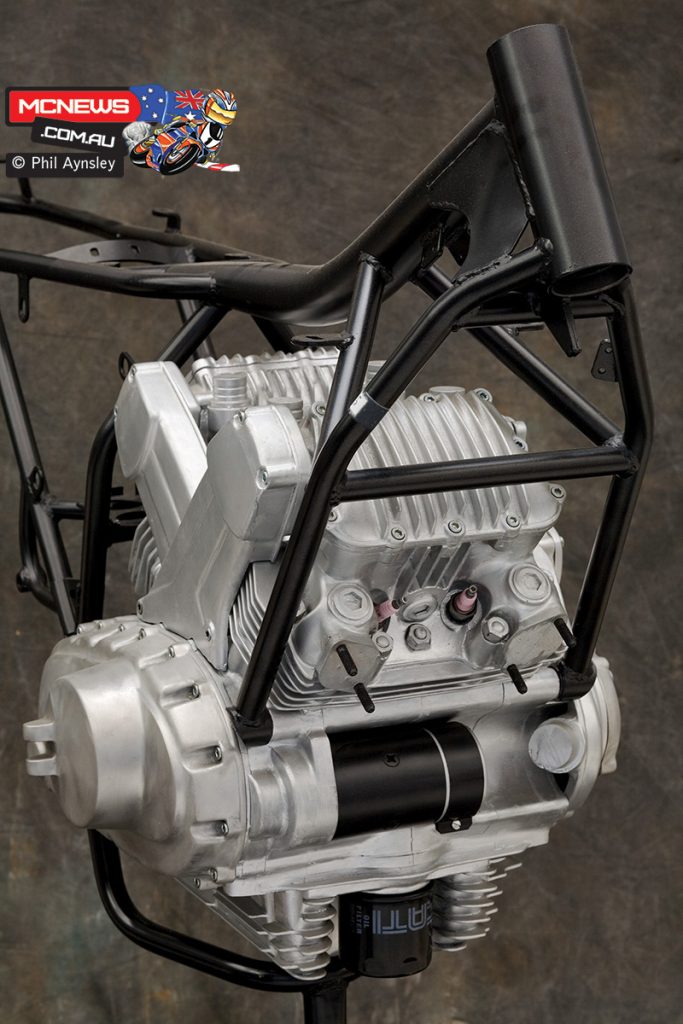
By 1981 a more Pantah-like motor was on the drawing board. Indeed essentially comprising of two 500cc Pantah engines side by side, the 994cc SOHC design was extremely over square with a bore/stroke of 78 x 52mm. This resulted in a compact unit that was only 100mm wider than the 500cc twin it was based on and weighing 98kg.
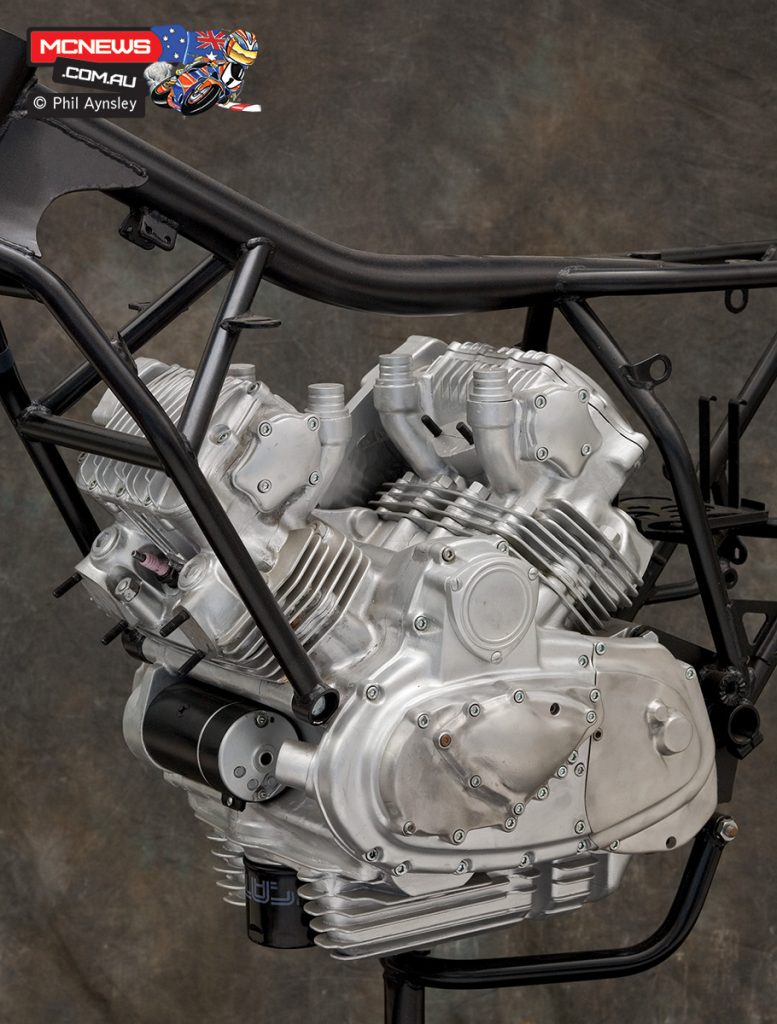
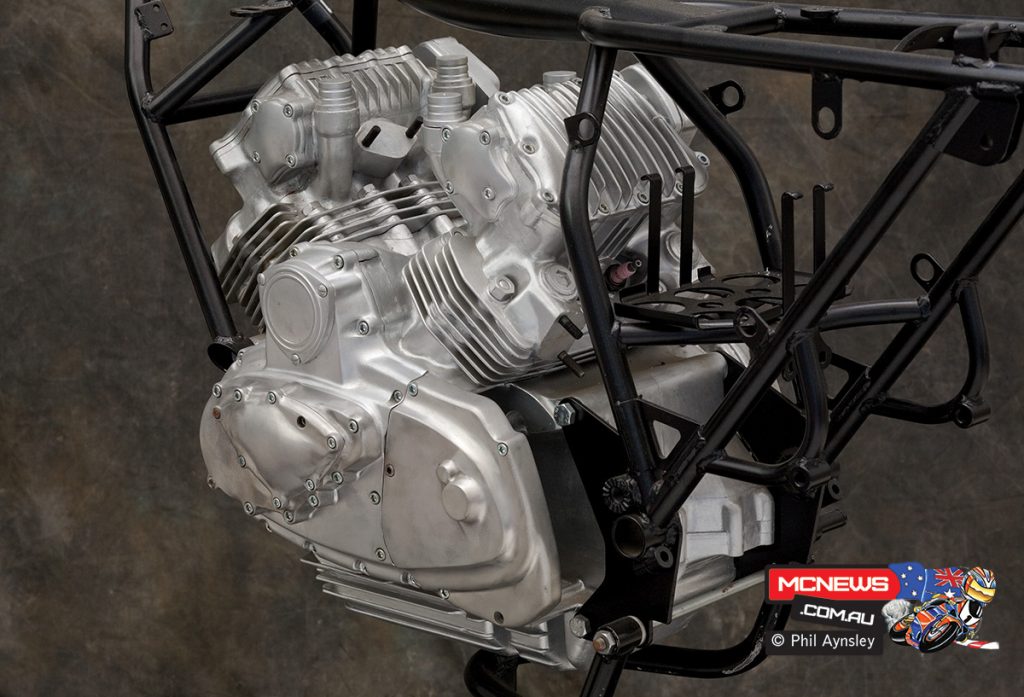
Air/oil cooling was employed, while the rear pair of cylinders shared the same block, the front pair were separated with the camshaft running in a casting between the heads. This arrangement provided more front wheel clearance. A pair of belts on the left hand side of the motor drove the camshafts.
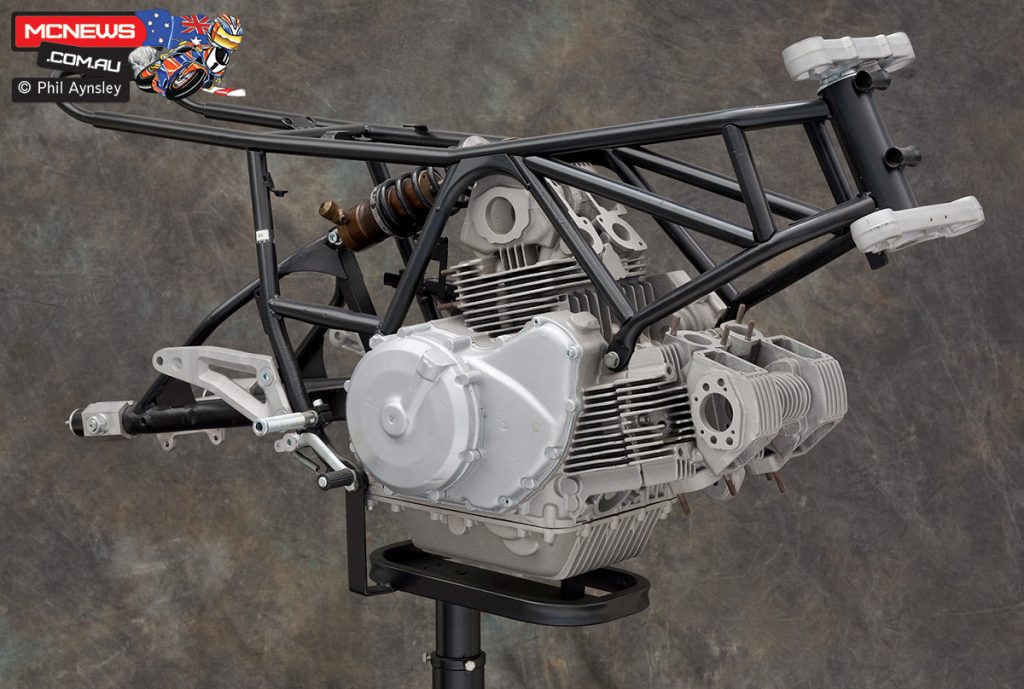
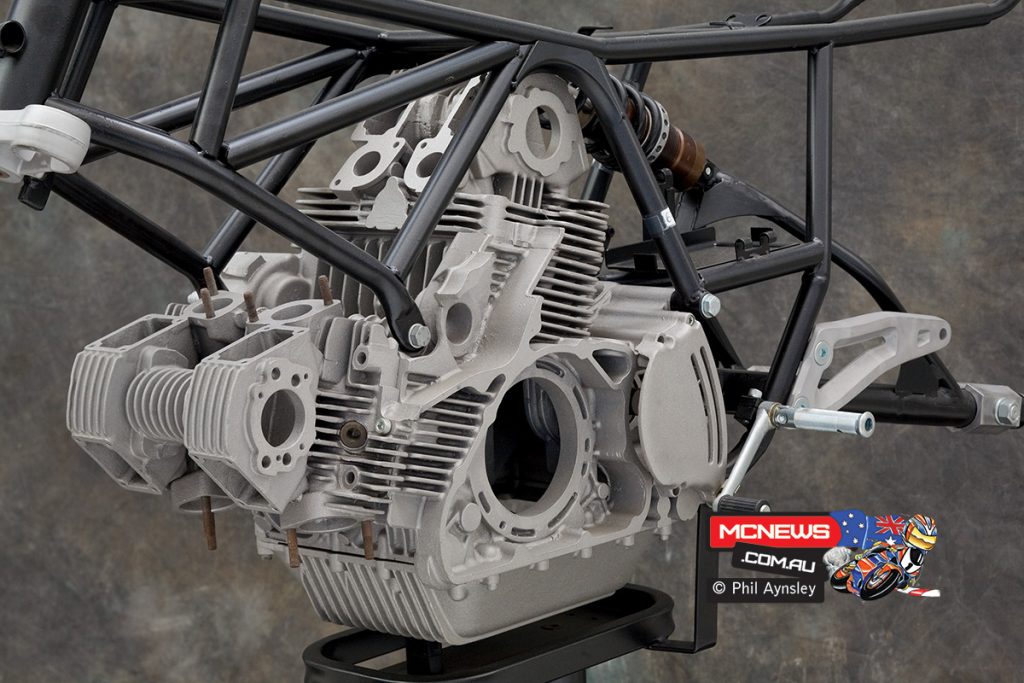
The heads featured an included valve angle of 50º, flatter than the Pantah’s 60º. The four 40mm Dell’Orto carburettors all faced forwards – although Taglioni had a EFI fuel system on order from SPICA that he was very keen to fit.
The one-piece, plain-bearing crankshaft had each pair of con-rods sharing a common crankpin. The pistons only had two rings and there were two oil pumps used to ensure adequate lubrication as well as cooling. A cassette style five-speed gearbox was fitted, a first for Ducati.
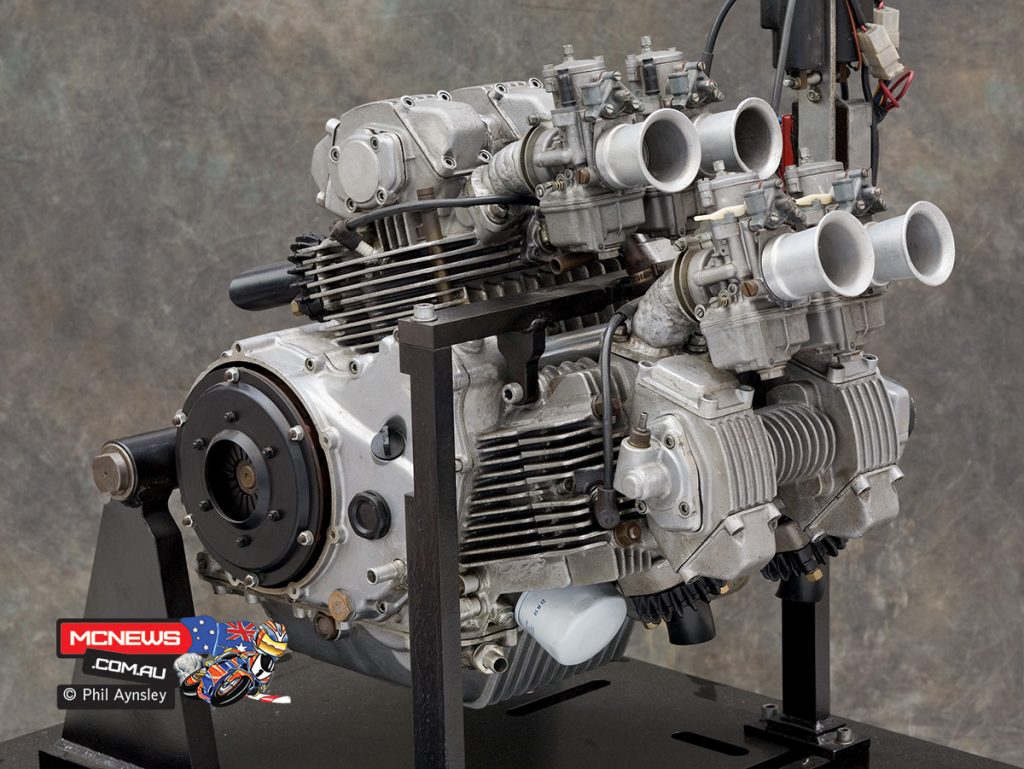
By the end of 1982 when the project was cancelled, bench testing had shown the design’s promise. With almost no development, touring cams and world wide compliant silencing the output was 105hp at 9500rpm (at the rear wheel). Usable power was available from 3,000rpm.
Using hotter cams and open exhausts 132hp at 11,000rpm was obtained, although with little power below 6000rpm. Over 150hp was expected with EFI fitted. If that wasn’t enough the design allowed for an increase in capacity to 1150cc!
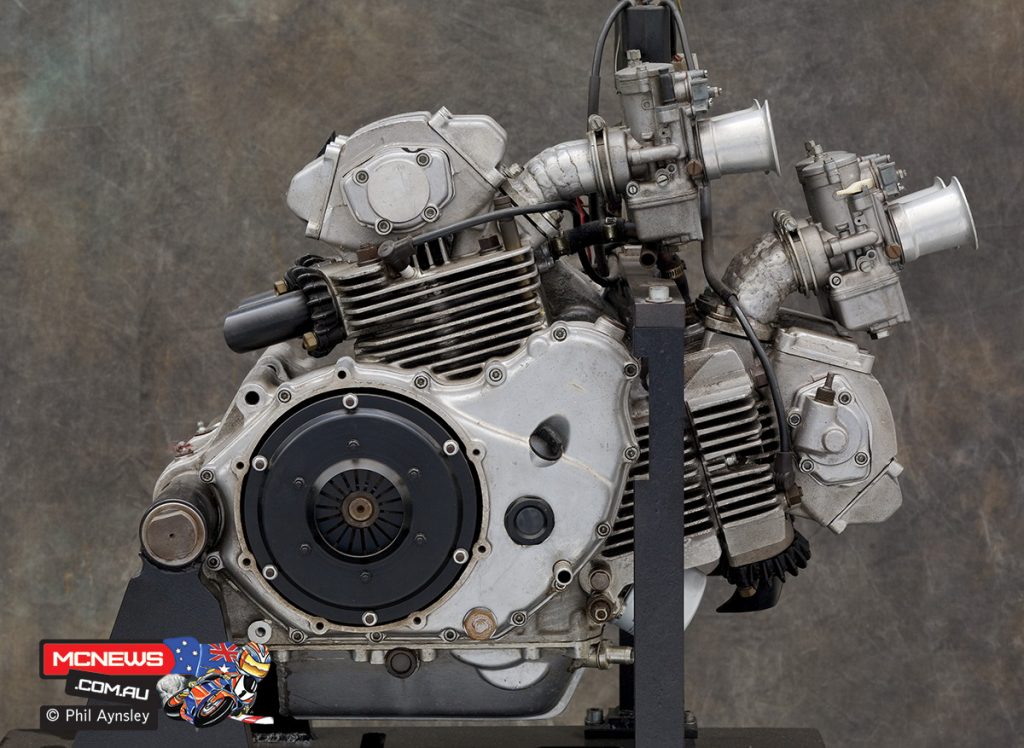
It was the decision of VM management (Ducati had become a part of the state owned VM Group in 1978) to call quits on the project. As Ducati motorcycle production had fallen to less than 3000 by 1983, VM saw the company solely as an engine manufacturer and signed an agreement to supply Cagiva with Pantah motors mid-year.
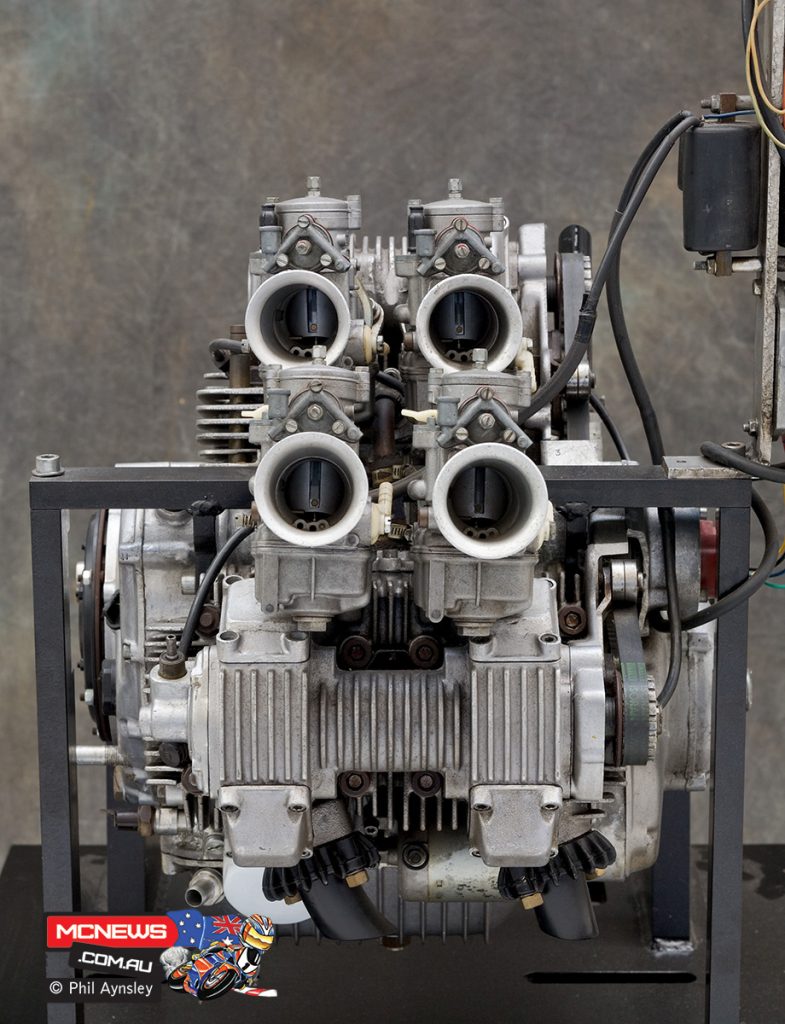
Additionally Ducati was making a wide range of VM diesel engines – which was what was keeping the doors open. The cost of tooling up to produce a major new motorcycle was simply too much.
Both the bench test motor and the cases used to develop the scaled up TT2 Pantah frame were photographed in the factory Race Dept in 2007.
The Ducati Desmosedici RR
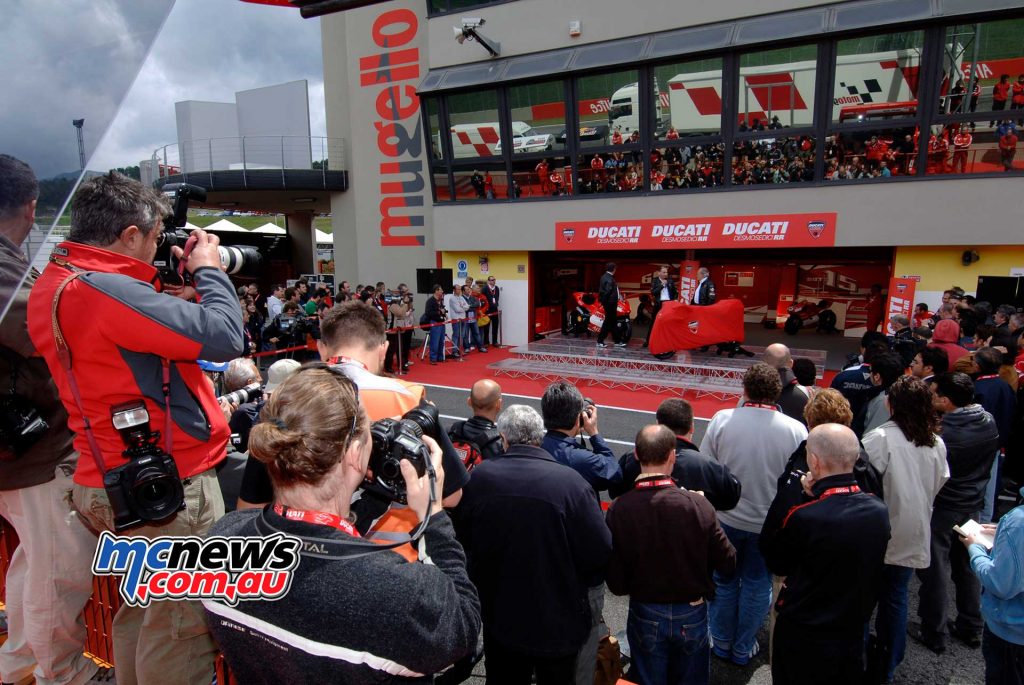
Ducati’s modern history with four cylinder power plants starts in 2001 when the 990cc Desmosedici MotoGP project was started. From its first race in 2003 through to its final season in 2006 (before the new 800cc formula was introduced for 2007) the motor proved to be very successful.
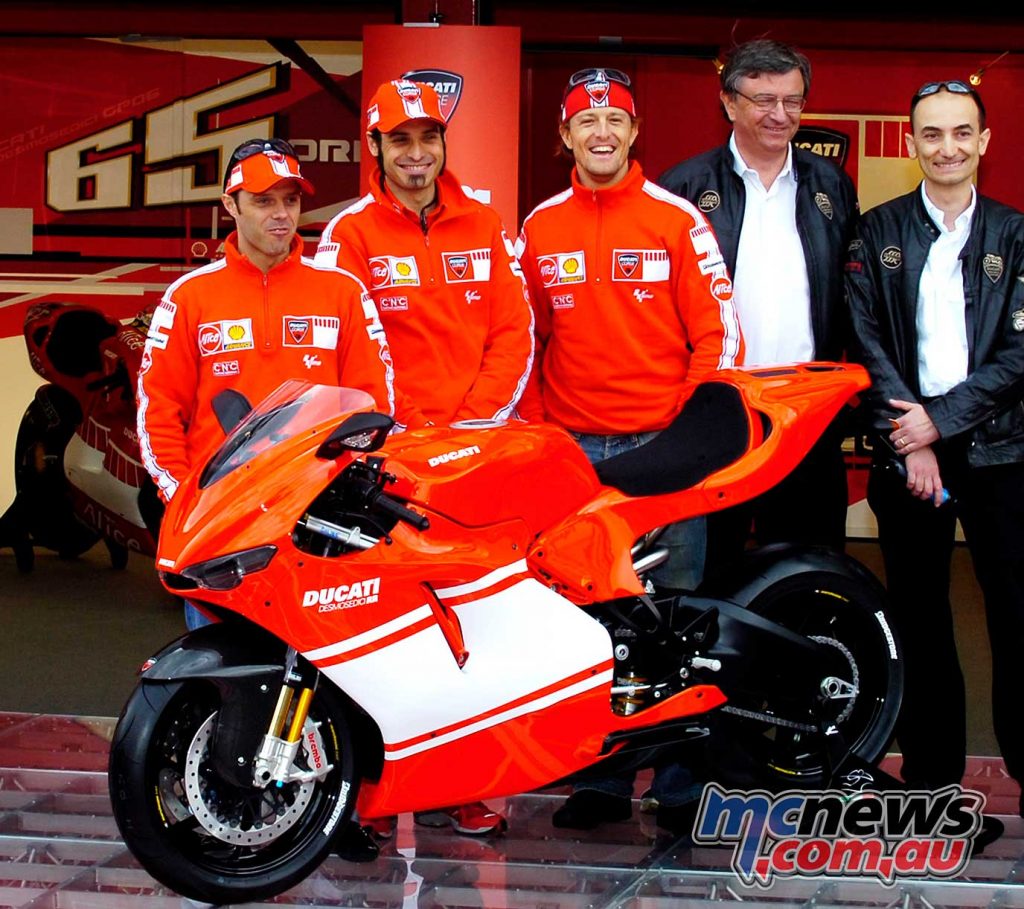
It was the 2006 GP motor that Ducati chose to develop to power the Desmosedici RR street bike which had been planned from the outset of the MotoGP programme, announced in 2004, saw the finalised production version shown in 2006 and the first customer bike (of 1500) delivered in 2008.
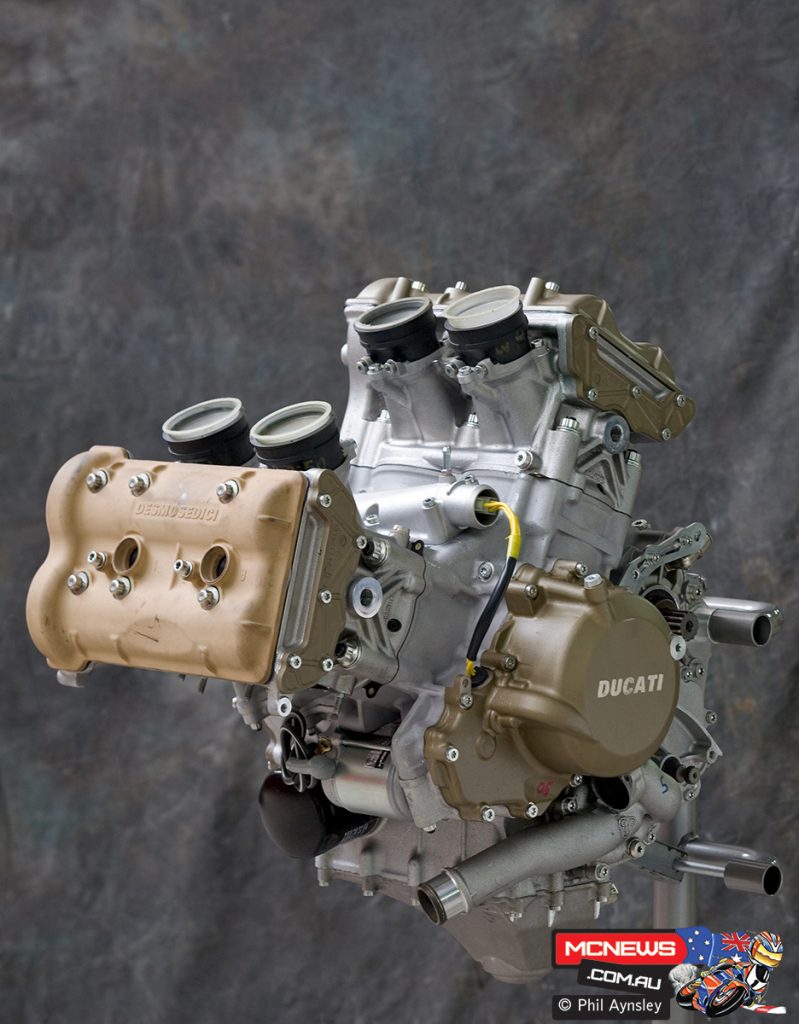
While very closely modelled on the GP16 motor the RR motor did not use any common parts except the cylinder head base bolts.
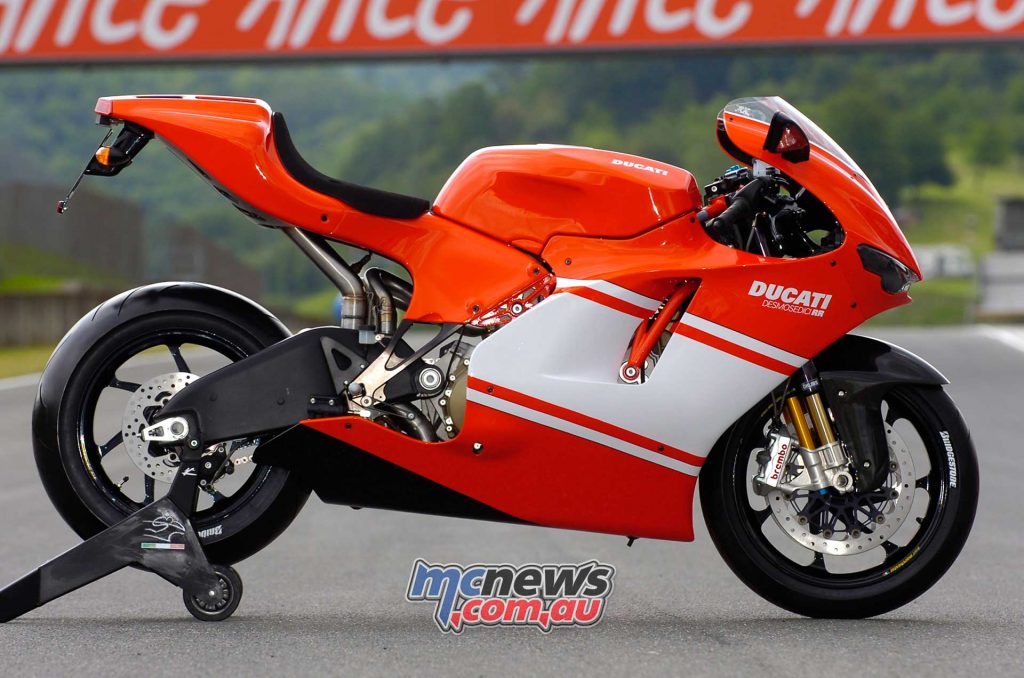
The RR unit was designed for production (if not mass production), from the outset. However keeping the motor as close to the race bike’s was the overriding philosophy – even requiring the design team to change to a ‘big bang’ firing order after the race bike adopted it for the 2004 season.
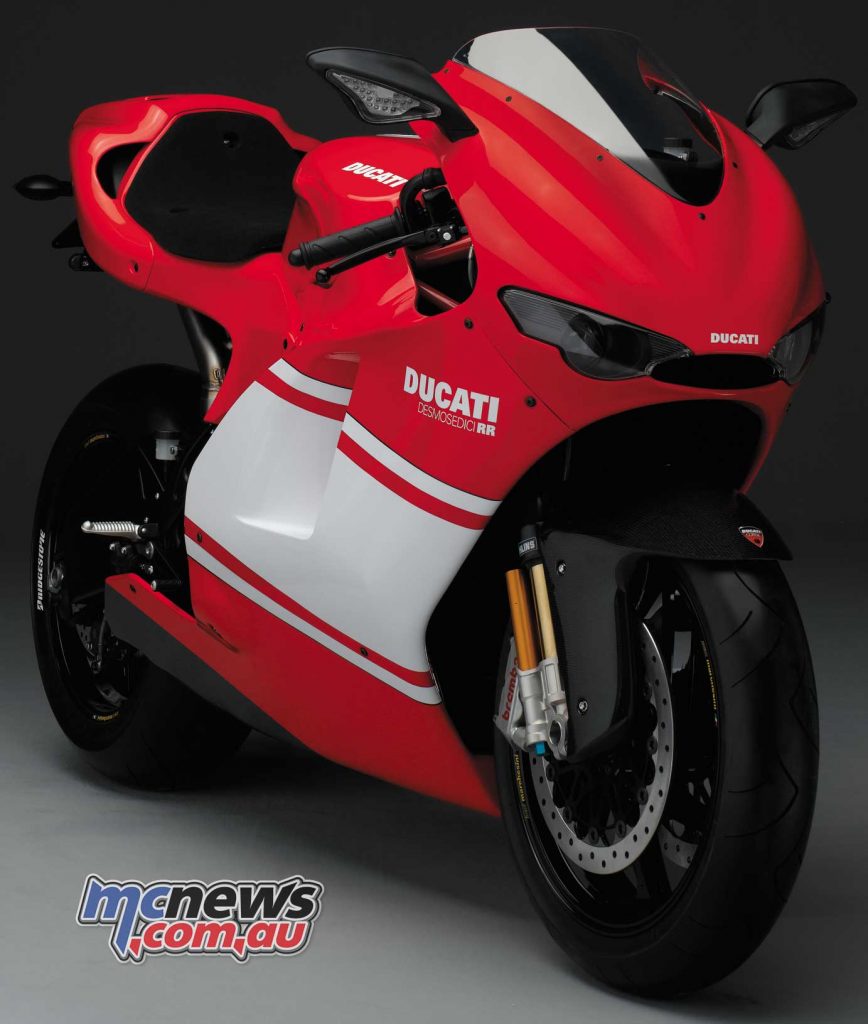
The RR produced 197.3hp at 13,800rpm (rear wheel 169.8hp at 13,250rpm) providing a top speed of 302km/h, all with a wet weight of 193kg (dry 171kg).
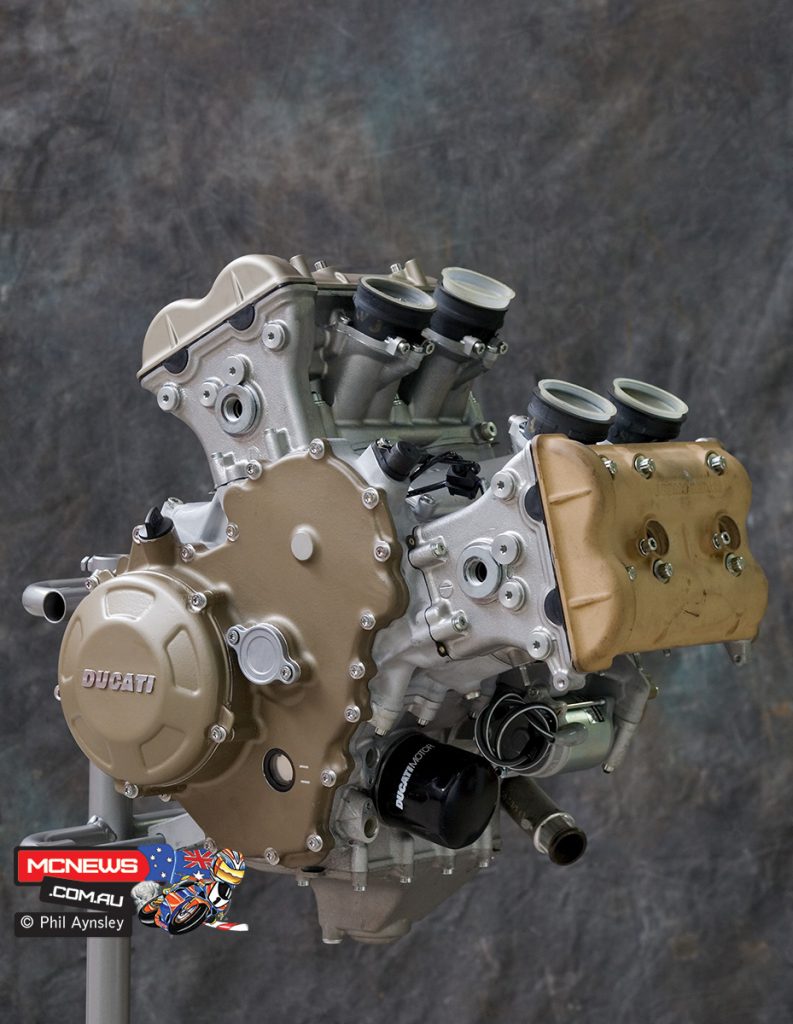
The motor shown here is a development test unit from 2006 and was photographed in the factory Race Dept. in 2007. It is interesting to compare the design with the Stradale photos that have been released (Link).
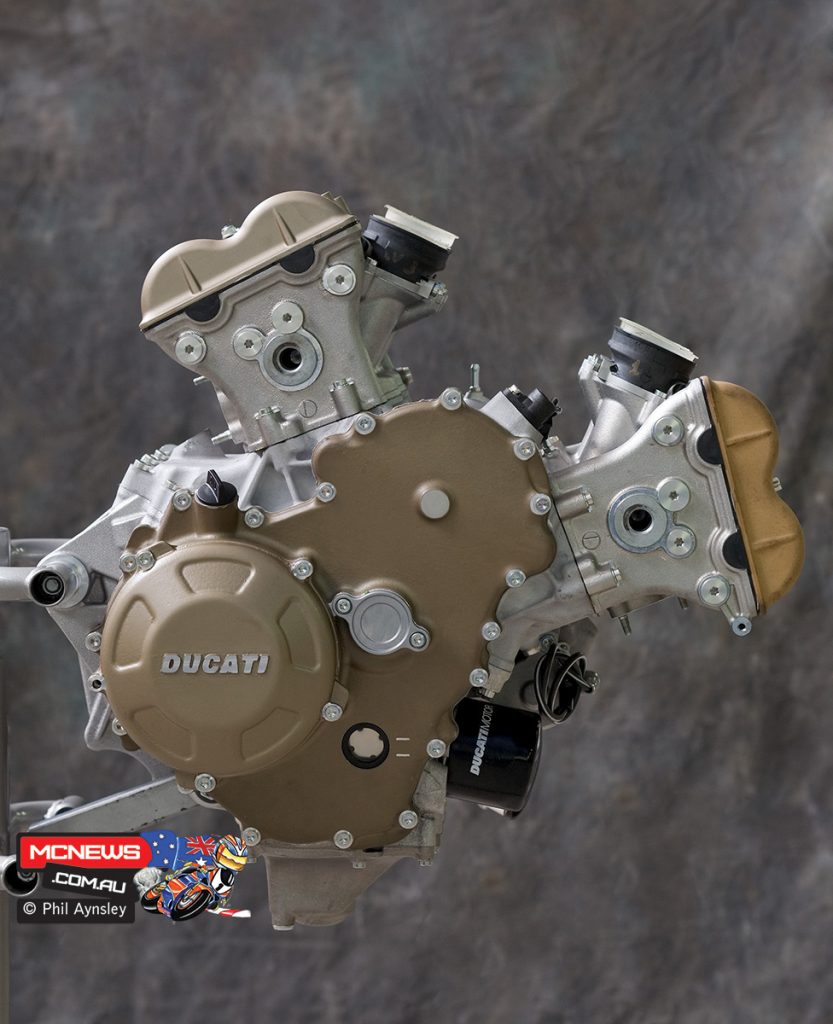
Many thanks to well known journalist and Ducatiophile Alan Cathcart for making available his articles in which he detailed his discussions about the Apollo and the final Bi-Pantah design with Fabio Taglioni back in 1984. Any inaccuracies are mine, not his!























